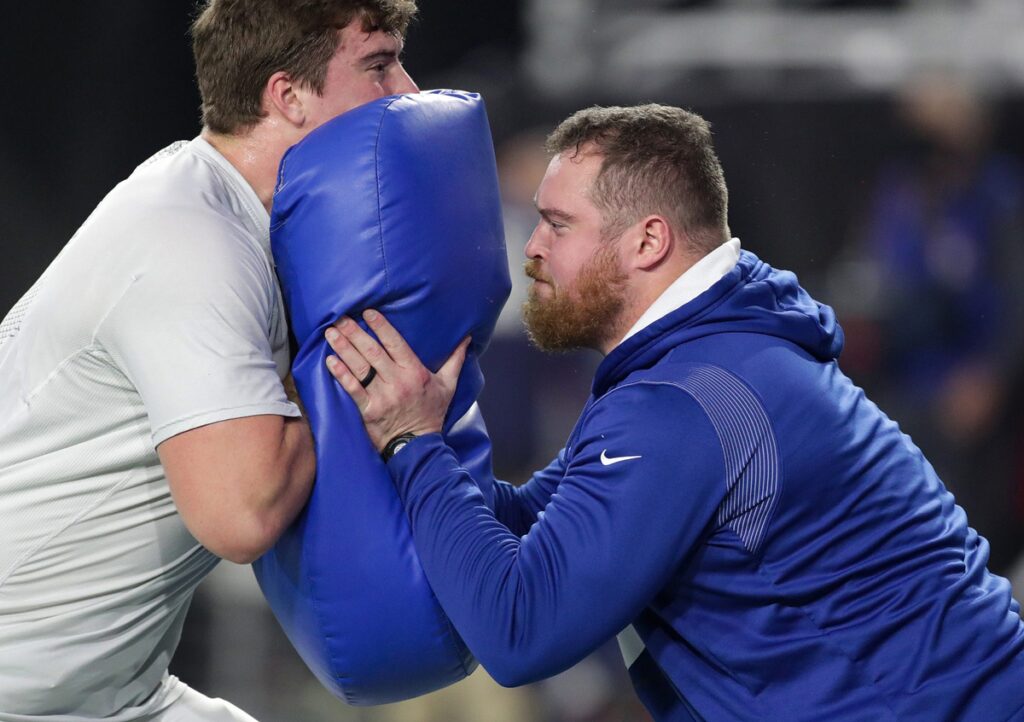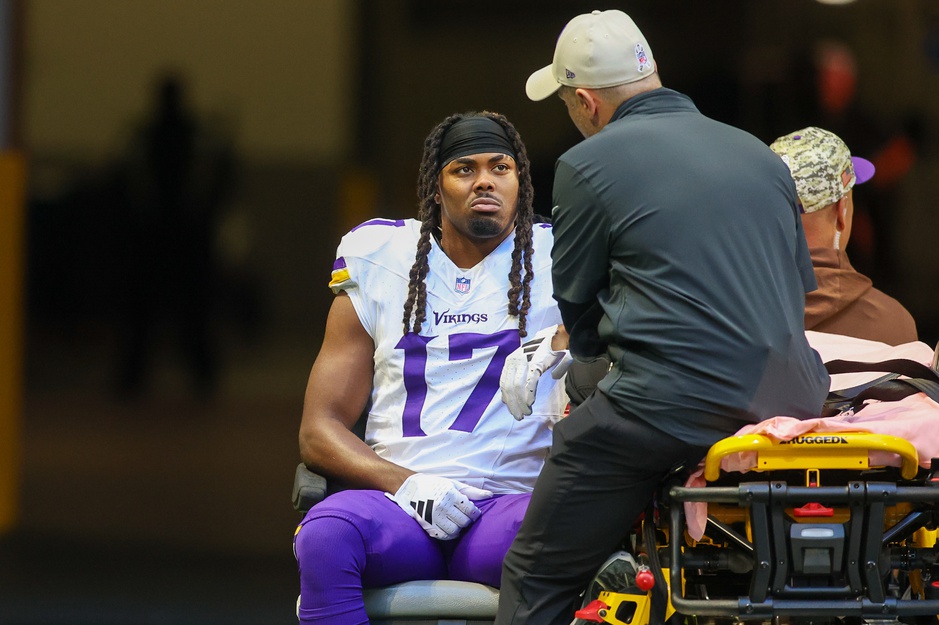Imagine the old Monday Night Football intro only with the lyrics being about a right guard training camp competition. Get ready. I mean get readyyyyy. Are you ready for some guard play? A mid-August partyyyyyy! We got Jesse and Wyatt and Chris, come on let’s dooooo this.
Instead of the helmets smashing into each other and exploding, it’s tackling dummies with the guards’ numbers.
Get Dan Dierdorf to Minnesota, pronto. Leave Dennis Miller wherever he is.
On Friday, when the Minnesota Vikings signed former Colt Chris Reed, it became completely clear that the plan for the right guard position is to toss a bunch of bodies at it.
Exciting stuff, right?
I’m not sure if the Vikings told Reed upon his signing that his position might as well have been played by King Tut in recent years considering how cursed it’s been.
Since 2016 the Vikings have gone from Brandon Fusco to Joe Berger to Mike Remmers to Josh Kline to Pat Elflein/Dru Samia to Oli Udoh. The two guys who were mostly effective, Berger and Kline, retired after playing decently for a single season. The team has tried all sorts of strategies, from moving guys from tackle to hoping journeymen would find their groove to drafting and developing. Nothing has worked.
Did someone bring a billy goat to right guard workouts? Were those guys on the right guard edition of the cover of Madden? Did these guys all play Superman in a movie?
In reality, signing Reed is a good idea. Here’s the unscientific way of knowing that to be true: Colts fans were tweeting about being sad that he was gone. Usually if the player’s previous fan base is firing off social media posts about how they’re glad they’ll never have to watch the guy get rag-dolled again, it’s not a great sign.
The numbers mostly back Colts fans’ feelings. Among guards who played at least 250 snaps, Reed ranked 41st out of 90 in PFF grade. For context, last year’s starter Oli Udoh rated 72nd and Dru Samia finished 91st of 92 in 2020.
There’s been a lot of things this offseason that have looked pretty similar to the Spielman era — whether it’s a Kirk Cousins extension or making moves with long-term salary cap implications — but using the approach of throwing numbers at the offensive line has yet been tried. They have often acquired one fringe guard and held on for dear life. Last year that was Mason Cole. They grabbed him via trade and then drafted Wyatt Davis in the third round with hopes and dreams that he could be good right away. Spoiler: Almost no third-round picks are good right away.
Adding Reed with veteran Jesse Davis, whose PFF grades as a guard put him in the same ballpark as Reed, is a logical approach. May the best fit win. Or, at very least, Reed and Davis set a bar for Wyatt Davis to clear. Last season Davis played largely with the third stringers and never saw the field. The ex-Ohio State star will have to earn the job over two dudes who know how to play in the NFL, rather than just being given the gig because nobody else is around. Or worse, like in 2021, being expected to start and then forcing the team to scramble before training camp to find somebody to try guard when he isn’t good. Has anyone written Oli Udoh an apology letter for that yet, by the way?
The downside of all of this is that the Vikings still spent all of their available cap space on defensive players and the best they could do to help Kirk Cousins was add some reasonably professional big fellas to give it their best shot. That’s better than looking up to the sky and hoping God protects Cousins from Grady Jarrett like they did in the past but it still doesn’t do a ton to shore up Cousins’ biggest weakness, which is interior pressure.
Cousins was statistically one of the worst QBs in the NFL when scrambling last year, per PFF data — though you didn’t need data for that. It could be seen from space. For three years straight, Cousins has been in the top five most pressured QBs from rushers over the right guard position. It’s not to say that the Vikings have done anything good when it comes to interior pass blocking — again, you can see that from Neptune — but it’s pretty noticeable that year after year he’s pressured up the middle, no matter who they put in there.
Go back to his Washington days and you’ll find in 2017 he was the most pressured QB from rushers over the left guard and 12th over the right guard. In 2016, fourth in pressure from RG, first in pressure from left guard. Let’s check 2015. Yep, sixth most from left guard, second most from center, sixth most from right guard. In the business, friends, we call this a trend.
When there’s a dozen different guards who have attempted to protect the same QB and that’s still where the pressure is being allowed from, well, it would appear the QB’s playing style has something to do with that. Yet the biggest investments around Cousins are at left and right tackle.
Sometimes positional value doesn’t apply the same across every team.
So, look, since Vikings fans aren’t going to see a completely overhauled roster or a new quarterback or tons of young players getting their first chance — all the things that would make training camp a zoo — we’re going to be studying the right guard competition like its Cowboys-49ers, Monday Night Football in 1994 when late July and August comes around.
It’ll be interesting because it’s always interesting because it’s football. But how much the winner is going to change things without being the next Steve Hutchinson is a different story. Ah yeah, Hutch reminds us that good guards do exist. If they nab a diamond in the rough here then maybe those interior pressure numbers will even out and the Vikings’ offense can be more consistent than in past years. But as usual, the Vikings are forced to take the approach of hoping something unlikely happens in order to get where they want to go.










